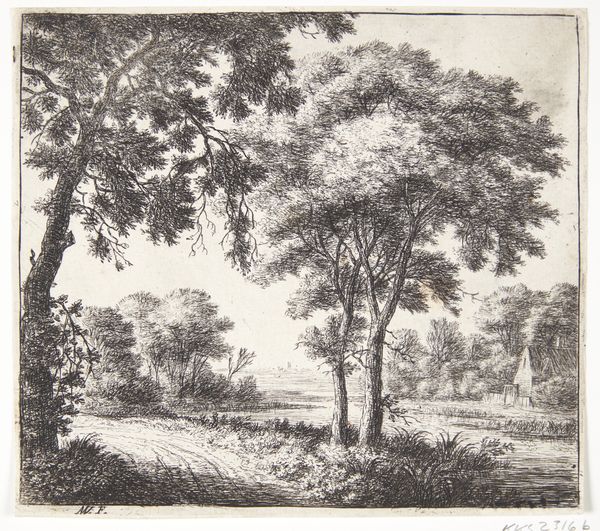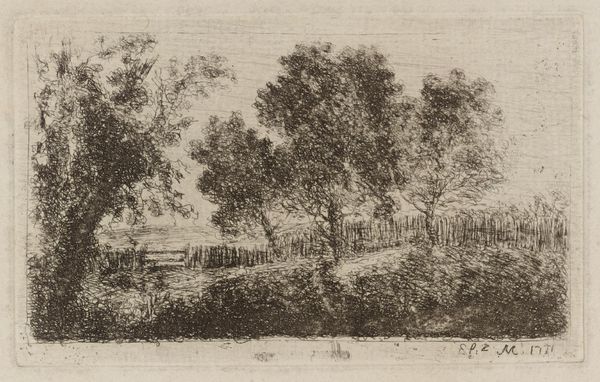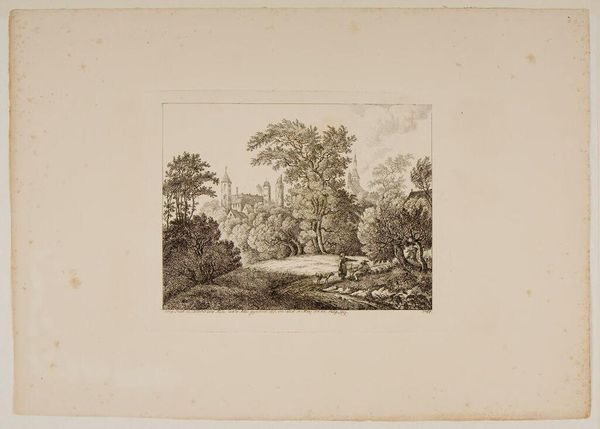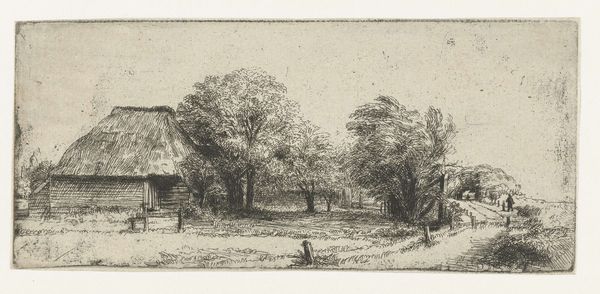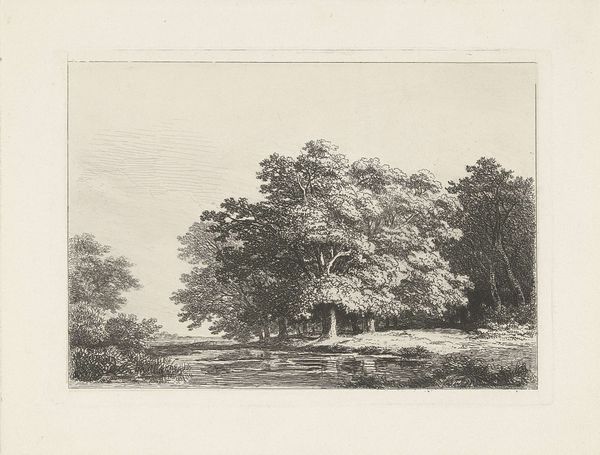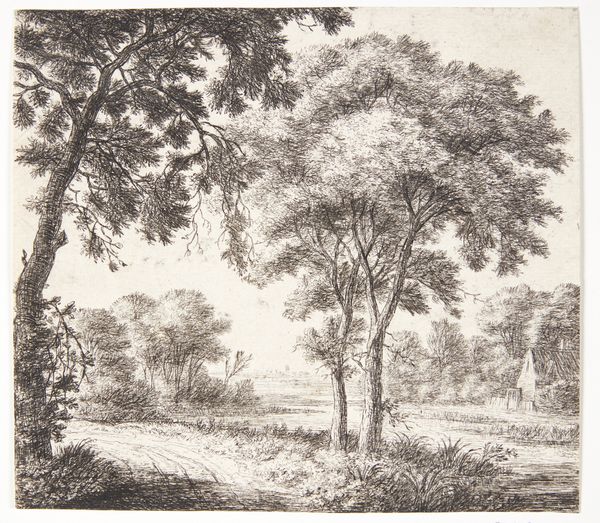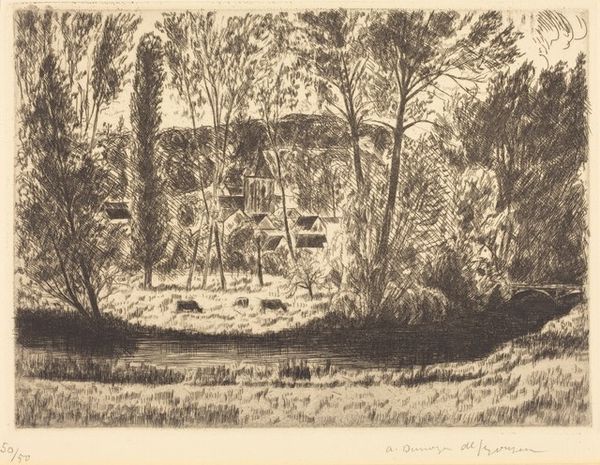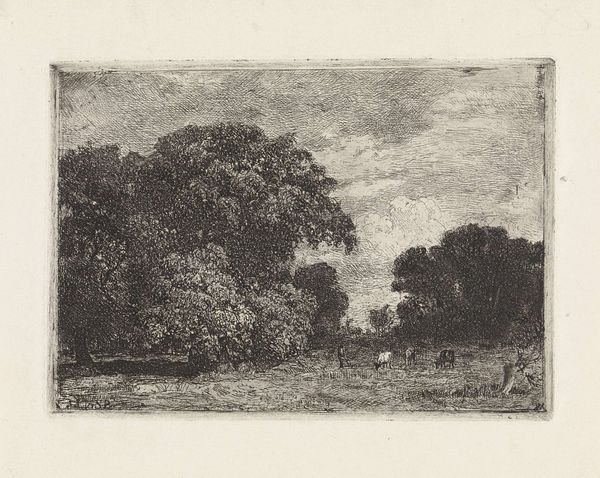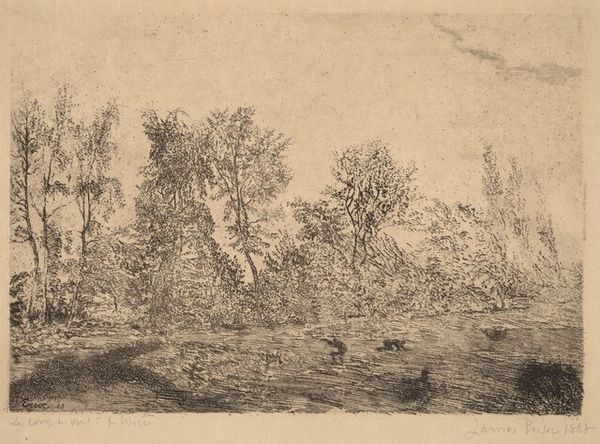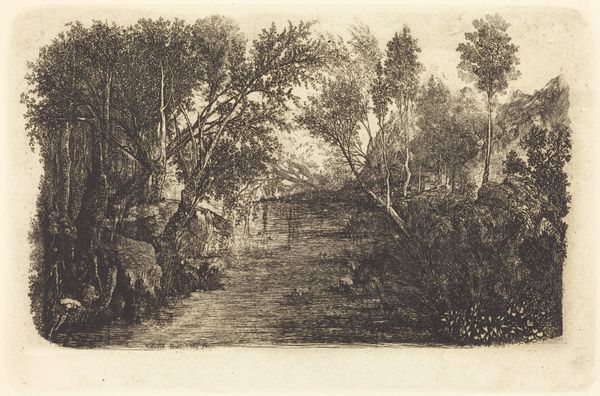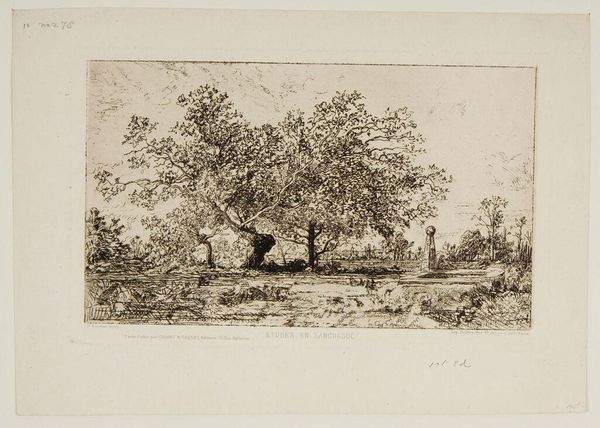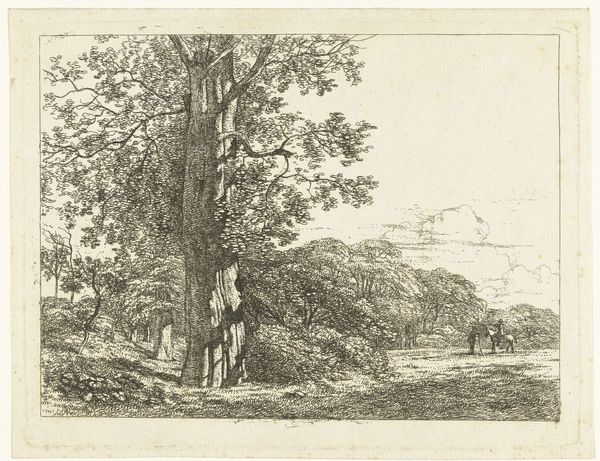
print, etching
# print
#
etching
#
landscape
#
figuration
#
realism
Dimensions: plate: 21.3 x 27.8 cm (8 3/8 x 10 15/16 in.) sheet: 32.5 x 49.9 cm (12 13/16 x 19 5/8 in.)
Copyright: National Gallery of Art: CC0 1.0
Editor: Here we have Anthony Gross’s “Fish Pond,” an etching from 1931. The composition feels quite enclosed, almost claustrophobic, despite being a landscape. There’s a stark contrast between the dense foliage and the figures wading in the water. How do you read this contrast? Curator: This work invites us to consider the relationship between humanity and nature, but through the lens of the interwar period. What seems like a simple pastoral scene is complicated by the economic hardships and growing social unrest that underpinned the 1930s. Who exactly are these figures? Are they leisurely fishing, or are they perhaps searching for sustenance, reflecting the anxieties and uncertainties of the era? Editor: That’s an interesting point. I hadn’t considered the social context of the time. It makes me think about the figures' placement – they seem quite small and almost vulnerable within the dominating landscape. Curator: Exactly! The figures, dwarfed by the overgrown and wild vegetation, highlights the power dynamics between humans and nature. Gross made this in France. The seemingly uncontrolled wildness of nature is heightened through his distinctive print-making style; how much do you think this aesthetic represents social attitudes? Consider too that he worked as a war artist. Editor: So you're suggesting that even in this ostensibly peaceful scene, we can find a reflection of broader social anxieties and even the premonitions of war, filtered through the representation of nature itself? Curator: Precisely. The “Fish Pond” becomes less about tranquility and more about a society grappling with instability, using the natural world as both a stage and a mirror. Editor: I never would have looked at it that way initially, but framing it within its historical context definitely sheds a new light on the piece. Thanks! Curator: Absolutely. And remember, the etching medium itself speaks to the proliferation and accessibility of images, a democratization of art that has its own socio-political implications. It gives me a fresh perspective as well.
Comments
No comments
Be the first to comment and join the conversation on the ultimate creative platform.
